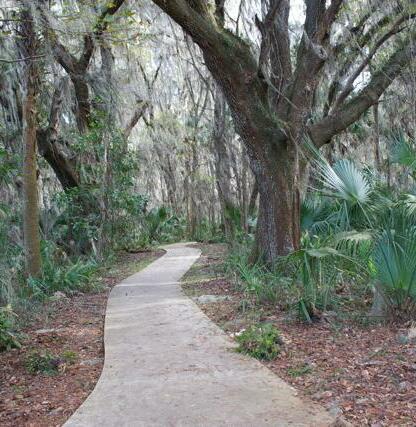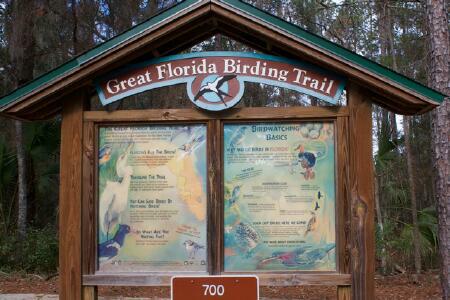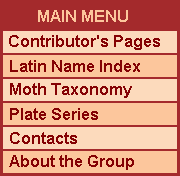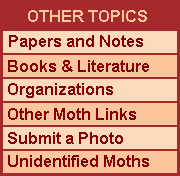

The 22,000 acre Paynes Prairie Preserve is part of the Florida state parks system. Located just to the south of Gainesville, it extends for ten miles to Micanopy. The preserve includes large amounts of wet and dry prairie, mixed upland woodlands, lakes and ponds. The prairies are home to small herds of bison and wild horses, wet prairies are home to alligators, gallinules and much other wildlife. At least 270 species of birds have been recorded within the park and about 1,000 species of lepidoptera (moths and butterflies) are reported on these pages.
Paynes Prairie Preserve offers a variety of features for day visitors and overnight campers. In addition to the modern campground there are launching ramps for small boats (electric motors only), miles of equestrian, hiking and bicycling trails. A visitors' center provides exhibits interpreting the natural and cultural history of the area. There is a 50-foot tall observation tower providing a prairie vista and a 100-yard boardwalk into gator habitat.
Much more information about the park is available at the Florida State Parks website. An area map of the preserve provides some hints of facilities here. Inquiries may be directed to:
Paynes Prairie Preserve State Park
100 Savannah Boulevard
Micanopy, Florida 32667
(352) 466-3397

 I first visited Paynes Prairie in 1998 as a birdwatcher. Since I became interested in lepidoptera in 2003 I have visited the park almost annually, on nearly every visit to Florida. In addition to visiting the preserve while on field trips of the Southern Lepidopterists' Society I have been fortunate to attract photographer friends there also.
I first visited Paynes Prairie in 1998 as a birdwatcher. Since I became interested in lepidoptera in 2003 I have visited the park almost annually, on nearly every visit to Florida. In addition to visiting the preserve while on field trips of the Southern Lepidopterists' Society I have been fortunate to attract photographer friends there also.
Carol Wolf and her husband Herb (Woodbury, TN) have for several years stopped at Paynes Prairie on their way to winter quarters at Kissimmee Prairie Preserve and the Everglades National Park. Most of the photographs of living moths shown on the plates here (see below) are Carol's. Jim Vargo (Mishawaka, IN) is an ardent collector whose well-prepared specimens grace many museum collections. We are fortunate to have photographs of more than 5,000 of his specimens on MPG plates and species pages. Many of them have been selected to complement Carol's and those of other contributors. Jim has also been a great help in assisting us with identification of living moths.
|
|
The Plate Collection
|
Plate 01.0
  
|
0001 - 4702 : Pre-pyraloid Micromoths
|
Plate 02.0
  
|
4703 - 6255 : Pyraloidea through Drepanidae
|
Plate 02.0
  
|
6256 - 8321 : Geometridae through Lymantriidae
|
Plate 04.0
  
|
8322 -11233 : Noctuoidea
|
|
|






